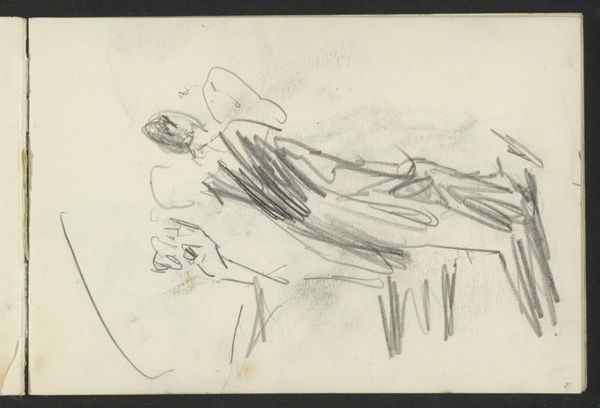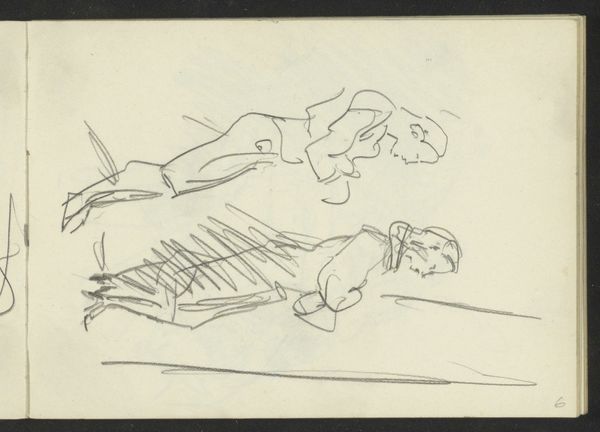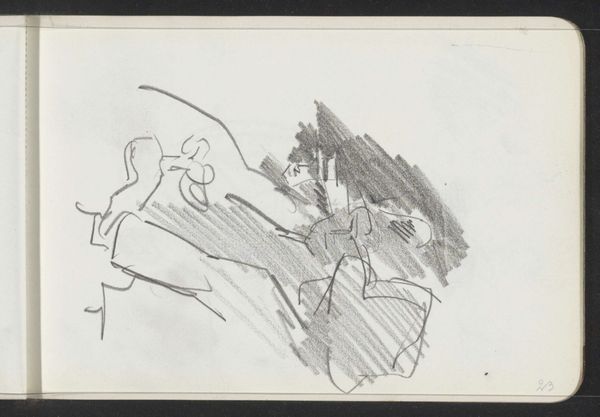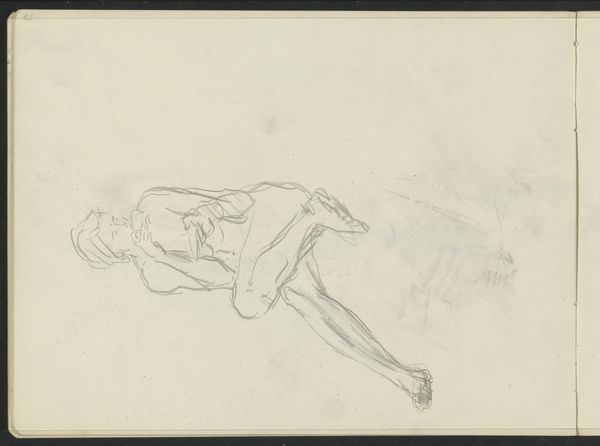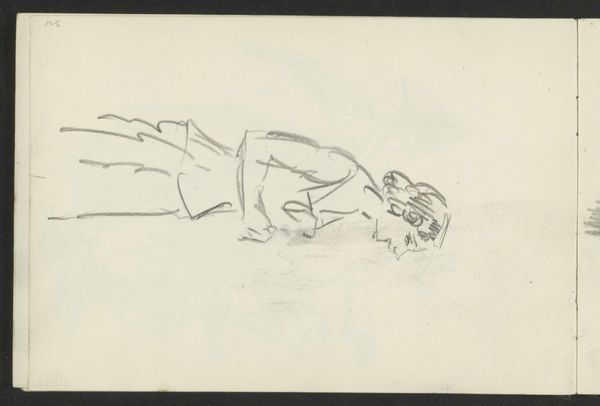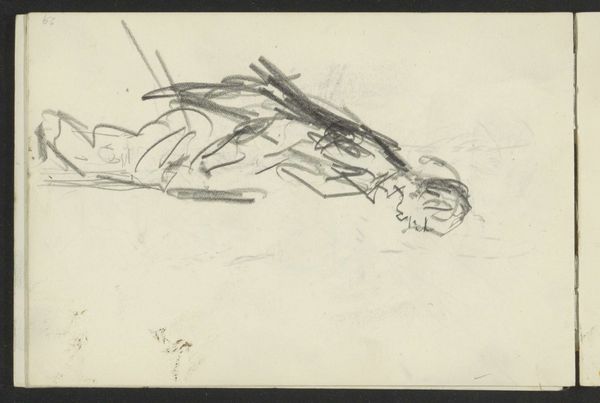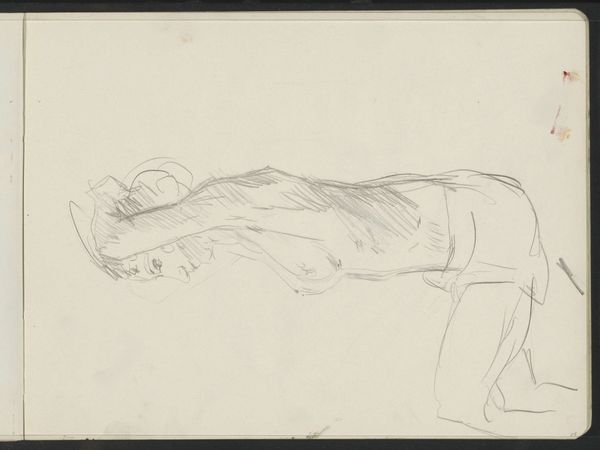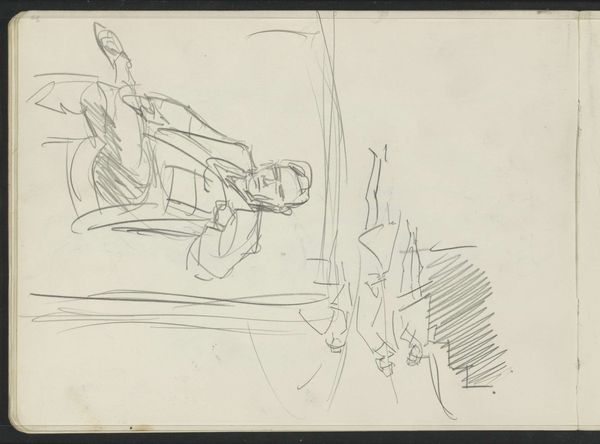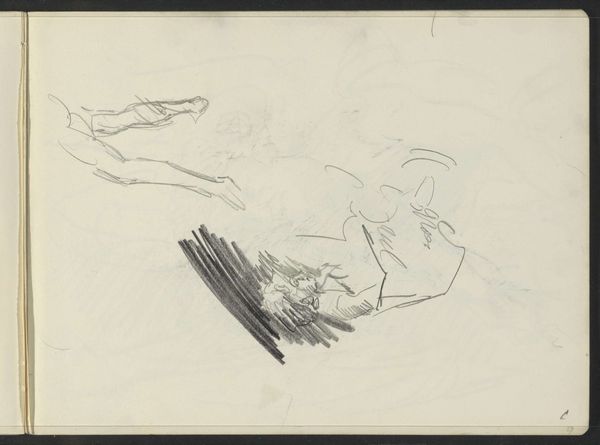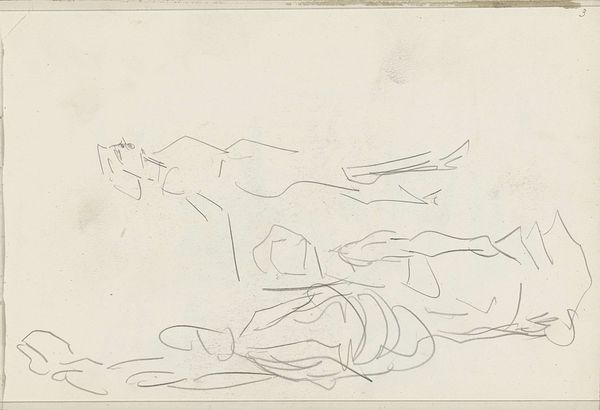
Copyright: Rijks Museum: Open Domain
Curator: Welcome. We’re looking at "Standing Figures, Possibly Artists," a work on paper created with pencil and pen by Isaac Israels, likely sometime between 1875 and 1934. It’s currently held at the Rijksmuseum. Editor: My first impression is one of fleeting observation, of captured movement. It's incredibly loose, almost scribbled, and yet there's a sense of figures emerging from the chaos of lines. Curator: Absolutely. Israels was deeply embedded in the art world of his time, surrounded by artists, models, and performers. This piece exemplifies the rapid sketching techniques prevalent during the rise of Impressionism, focusing on the labor of artistic representation itself. Were these figures indeed fellow artists, they likely participated in the very scene of artistic production that Israels sought to portray. Editor: Note the way Israels uses line – not to define form precisely, but to suggest volume and light. There’s a deliberate lack of detail, pushing it away from a conventional portrait and toward something more abstract, more about the essence of form than the individual figures themselves. It also reflects on the line as an indexical medium, a register of the movements of the artist’s hand. Curator: Think of the kind of paper Israels used. Probably something inexpensive, readily available, like a sketchpad. The drawing emphasizes the accessible nature of artmaking; it demystifies the creative process, highlighting the artist's work as part of a larger social exchange involving tools, labor, and everyday life. What can this type of material usage and depiction mean in relation to the artist's social status? Editor: It highlights the materiality of the process – the direct translation of thought into physical mark. The emphasis isn’t on capturing likeness perfectly, but on capturing the energy, the movement, of the subjects, and the gestures with pen and pencil, all rendered with an amazing efficiency of means. The overall aesthetic is almost aggressively informal. Curator: I agree. Its value, therefore, lies less in some inherent aesthetic quality, but in what it tells us about the infrastructure of art, who is consuming and producing it. The seeming simplicity actually veils a complex interplay of social roles, reflecting a certain understanding about artistic creation and a cultural milieu. Editor: Ultimately, it gives the piece a dynamic energy, which feels more ‘real’ somehow than if he’d striven for meticulous detail. A study in gesture, really. Curator: Yes, an important contribution towards our understanding of the relationship between social circumstances and visual art, thank you! Editor: It really shows you that in less lies more.
Comments
No comments
Be the first to comment and join the conversation on the ultimate creative platform.
